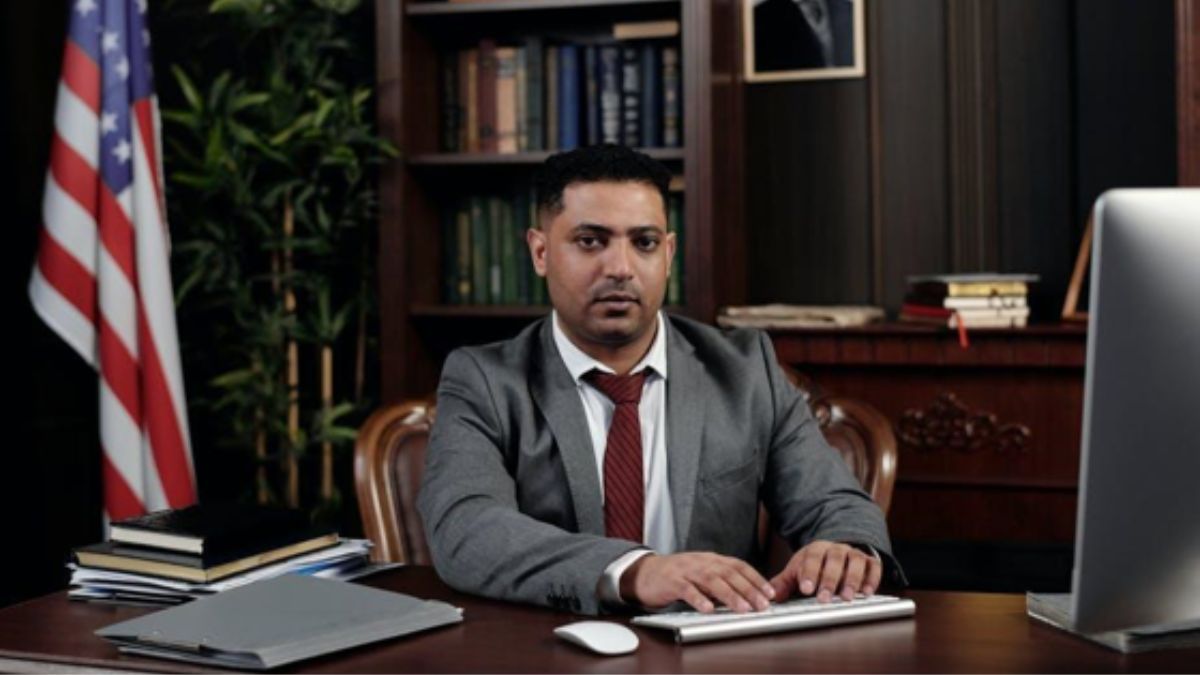LAW
Offshore Accident Lawyer Aoawe.com: Navigating Legal Waters

Navigating the turbulent waters of offshore work is challenging enough without the added burden of legal complexities following an accident. If you or someone you know has faced an offshore accident, understanding the pivotal role of an offshore accident lawyer can make all the difference. This blog post aims to shed light on the significance of having a specialized legal expert by your side and how Aoawe.com can be your guiding star in such turbulent times.
Why Offshore Work is Risky Business
Offshore work, whether in oil rigs, shipping, or marine construction, is fraught with inherent risks. Extreme weather conditions, heavy machinery, and the isolated nature of the work sites contribute to a hazardous environment. Despite stringent safety regulations, accidents still occur, often resulting in severe injuries or even fatalities.
Common Types of Offshore Accidents
- Equipment Failures:
The machinery used in offshore operations is often subject to harsh conditions, leading to wear and tear. Equipment failures can result in catastrophic accidents.
- Weather-Related Incidents:
Sudden storms and rough seas can lead to accidents, including slips, falls, and even capsizing of vessels.
- Human Error:
Fatigue, lack of training, and miscommunication can cause significant accidents, affecting not only individual workers but entire operations.
The Role of an Offshore Accident Lawyer
Given the complexities of laws governing maritime and offshore activities, having a lawyer specialized in this field is crucial. They possess the expertise to handle unique challenges that come with offshore accidents.
Expertise in Maritime Law
Maritime law, also known as admiralty law, governs offshore activities. It is a specialized area of law with its own set of rules and regulations. An offshore accident lawyer understands these intricacies and can effectively navigate through them to build a robust case for you.
Handling Insurance Companies
Insurance companies often attempt to minimize payouts. An experienced lawyer will negotiate on your behalf, ensuring you receive the compensation you deserve.
Investigation and Evidence Collection
Offshore accident lawyers have the resources to conduct thorough investigations. They gather vital evidence, interview witnesses, and collaborate with experts to strengthen your case.
Steps to Take Following an Offshore Accident
Knowing what to do immediately after an offshore accident can significantly impact your case. Here are some crucial steps to follow:
Seek Immediate Medical Attention
Your health and safety are paramount. Seek immediate medical attention, even if the injury seems minor. This also ensures that there is an official record of the injury, which will be important for your case.
Report the Incident
Notify your supervisor and ensure the incident is officially documented. This report will be a critical piece of evidence in your case.
Gather Evidence
If possible, collect evidence from the accident scene. Photographs, witness contact information, and any other relevant details can be invaluable.
How Aoawe.com Can Help
At Aoawe.com, we specialize in providing legal assistance to offshore workers. Our dedicated team of lawyers is well-versed in maritime law and committed to helping you secure the compensation you deserve.
Comprehensive Legal Support
From initial consultation to final settlement, our lawyers provide comprehensive legal support, guiding you through every step of the process.
Personalized Approach
We understand that each case is unique. Our personalized approach ensures that your specific needs and circumstances are taken into account, crafting a legal strategy tailored to you.
Proven Track Record
With a proven track record of successful cases, Aoawe.com is a trusted name in offshore accident legal assistance. Our extensive experience and expertise ensure that you are in capable hands.
Real-Life Success Stories
Case Study 1: Equipment Failure
John, an offshore drilling worker, suffered severe injuries due to a malfunctioning drill. Aoawe.com took on his case, and through meticulous investigation and expert testimonies, secured a substantial settlement that covered his medical expenses and provided financial stability during his recovery.
Case Study 2: Weather-Related Incident
Sara, working on a marine construction site, was injured during a sudden storm. Despite initial resistance from the insurance company, Aoawe.com fought diligently to ensure she received fair compensation for her injuries and lost wages.
Conclusion
Navigating the aftermath of an offshore accident can be overwhelming. However, with the right legal support from Offshore Accident Lawyer Aoawe.com, you can focus on recovery while we handle the complexities of the legal process. Our expert team is dedicated to ensuring you receive the justice and compensation you deserve. Don’t hesitate to reach out and take the first step towards securing your future.
LAW
Understanding Legal Rights: Filing Negligence Claims Against Nursing Homes

Is your loved one receiving the care they deserve in a nursing home? Many families trust these facilities to provide safety, comfort, and dignity. Unfortunately, some nursing homes fail to meet this responsibility.
When this happens, knowing your legal rights can make a difference. Understanding how to file a negligence claim is essential to protect your loved one and seek justice. This guide will walk you through the process of recognizing negligence, proving liability, and pursuing fair compensation.
Recognizing Nursing Home Negligence
Negligence happens when a nursing home fails to provide proper care. This can lead to harm, injury, or worse. Common signs of negligence include bedsores, unexplained injuries, poor hygiene, dehydration, or sudden weight loss. Emotional signs like depression or fear can also point to neglect.
Families often feel powerless when they notice these signs. But knowing what counts as negligence is a crucial first step. Staff may be overworked or untrained, leading to poor care. In other cases, the facility may cut corners to save money. Neither excuse is acceptable.
Gathering evidence is key. Take photos, document changes in behavior, and keep track of medical visits. Speak to other residents or their families to see if they’ve noticed similar issues. By recognizing the signs early and collecting proof, you build a stronger case. Your loved one deserves dignity and respect, and you have the right to fight for that.
Understanding Legal Rights
Families have legal rights when a nursing home fails to provide adequate care. These rights exist to protect your loved one from harm and ensure they receive proper treatment. Laws vary by state, but most protect against abuse, neglect, and mistreatment.
Residents have the right to live in a safe, clean environment. They deserve proper medical care, nutrition, and the ability to make decisions about their own lives. When these rights are violated, families can take legal action.
It’s important to understand that a nursing home for negligence can be held accountable under the law. Whether the mistreatment is physical, emotional, or medical, you have the right to seek justice. Legal action not only helps your loved one but can also prevent the same mistreatment from happening to others.
If you’re unsure of your rights, consulting with an attorney experienced in elder law can help. They can explain state-specific rules and guide you on what steps to take next. Remember – your loved one has rights, and you have the power to uphold them.
Proving Liability in a Negligence Case
Proving liability is one of the most important steps in filing a nursing home negligence claim. To win your case, you must show that the facility failed to meet its duty of care and that this failure directly caused harm.
Start by gathering solid evidence. Medical records, photos of injuries, and statements from staff or other residents can help. If you suspect neglect, document every detail. Write down dates, times, and anything unusual you notice.
In most cases, you’ll need to show that the nursing home acted unreasonably. This might mean proving staff didn’t respond to a medical emergency or failed to provide basic needs like food, water, or hygiene. An experienced lawyer can help gather expert testimony to support your claim.
Sometimes, nursing homes try to deny responsibility. They may blame staff members or claim the resident’s condition caused the harm. Strong, organized evidence can counter these arguments. Proving liability is tough, but it’s necessary to hold the nursing home accountable and win compensation.
Seeking Fair Compensation
Filing a negligence claim isn’t just about proving fault – it’s about getting fair compensation. Your loved one deserves more than an apology. Financial compensation can cover medical bills, therapy, and other expenses caused by the nursing home’s neglect.
Compensation may also address the emotional toll. Pain, suffering, and reduced quality of life are all valid reasons to seek damages. In some cases, courts may even award punitive damages to punish the nursing home for gross negligence.
It’s important to work with an attorney who understands nursing home negligence cases. They can help calculate a fair settlement and negotiate with the facility’s legal team. Many cases settle out of court, but if needed, your lawyer can take the case to trial.
Your loved one’s health and dignity are priceless. Seeking compensation isn’t about money – it’s about ensuring they get the care they deserve. It also sends a strong message to other nursing homes that negligence won’t be tolerated.
Overcoming Common Challenges
Filing a negligence claim can be difficult. Nursing homes often have experienced legal teams to defend them. They may argue that injuries were unavoidable or that staff did their best. Families may feel intimidated, but staying persistent is crucial.
One common challenge is proving the harm was due to negligence, not a medical condition. Detailed medical records and expert opinions can make a big difference. A skilled attorney can also help challenge false claims made by the nursing home.
Another challenge is dealing with emotional stress. Seeing a loved one suffer is heartbreaking, and the legal process can feel overwhelming. Remember, you don’t have to do this alone. Support from family, friends, and a compassionate legal team can ease the burden.
Persistence is key. Nursing homes may hope families give up, but staying determined helps ensure your loved one’s voice is heard. Justice may take time, but it’s worth fighting for.
Know Your Rights When Filing Negligence Claims Against Nursing Homes
Filing a negligence claim against a nursing home may seem overwhelming, but understanding your legal rights makes a huge difference. Recognizing signs of neglect, proving liability, and seeking fair compensation are all steps to ensure your loved one gets the dignity and care they deserve.
Remember – you’re not just advocating for your family member. You’re helping protect other vulnerable people from suffering the same mistreatment.
For more helpful guides on understanding your legal rights, check out our other articles on related topics. Knowledge is power, and the more you know, the better you can protect those who matter most.
LAW
Understanding Wrongful Death Claims and Legal Rights

Losing someone because of another person’s actions is devastating. Wrongful death claims help bring attention to these tragic losses. They serve as a way to seek justice when a life is taken too soon.
Grief can leave families searching for answers. Wrongful death claims provide a path to uncover the truth and hold the right people accountable. When justice is pursued, it can bring a sense of closure to those left behind.
In this blog, we will discuss everything you need to know about wrongful death claims and your legal rights.
Definition and Legal Basis of Wrongful Death Claims
A wrongful death claim occurs when someone dies because of another person’s actions. This claim allows families to seek justice. It also helps them get compensation for their loss.
The legal basis for wrongful death claims varies by state. Each state has its wrongful death law. These laws define who can sue and what damages families can recover.
In general, wrongful death claims focus on negligence or intentional harm. If someone is careless and causes a death, this can lead to a claim. Families can hold the responsible party accountable through these claims.
Common Causes of Wrongful Death Cases
Many situations can lead to wrongful death claims. Common causes include car accidents, medical malpractice, and workplace incidents. Each case can be different and complex.
Vehicle accidents frequently lead to wrongful death cases. Distracted driving, drunk driving, and speeding can cause fatal accidents. An investigation usually follows to determine fault.
Medical malpractice is another cause. When doctors or hospitals fail to provide care, this can result in death. Families may have a case if negligence is proven.
Who Can File a Wrongful Death Claim?
Only certain people can file a wrongful death claim. Typically, immediate family members, like spouses or children, have this right. In some cases, parents or siblings can file claims as well.
The laws vary by state regarding who can sue. Some states allow distant relatives to file claims. It is important to understand local laws to know if you can file.
Filing a claim can help families cope with their loss. It provides a way to seek justice for their loved ones. The emotional impact can be just as important as financial recovery.
Proving Liability in a Wrongful Death Case
Proving liability requires strong evidence. Lawyers must show that the other party was negligent or intentional. Strong evidence includes accident reports, witness statements, and expert testimony.
Each case is unique and requires careful investigation. Collecting evidence quickly is essential. Sometimes, it is necessary to interview witnesses before memories fade.
The burden of proof lies with the plaintiff. The family must prove their case to seek damages. The process can be demanding and complex.
Types of Compensation Available to Families
Families can seek several types of compensation. This may cover funeral costs and loss of income. They can also include pain and suffering damages.
Funeral and burial expenses can be significant. Families should not have to bear this financial burden. Compensation can help ease the cost during a difficult time.
Loss of income is another important type of compensation. If the deceased was the primary earner, this can be crucial. Families depend on this income for their livelihood.
The Role of Negligence in Wrongful Death Lawsuits
Negligence plays a key role in wrongful death lawsuits. Plaintiffs must prove that negligence caused the death. This often involves showing that someone failed to act as a reasonable person would.
Understanding negligence can be complicated. It includes actions that are careless or reckless. Families must provide strong evidence to support their claims.
The court evaluates the evidence presented. If negligence is proven, the family can recover damages. This is essential to holding wrongdoers accountable.
How Statutes of Limitations Impact Your Claim
Statutes of limitations set a time limit on filing claims. Each state has its own rules about how long you have. Missing this deadline can result in losing the right to sue.
Time limits vary depending on the state and case type. Some states may allow one to three years to file a wrongful death claim. It is vital to act quickly to protect your rights.
Consulting a wrongful death attorney can help avoid issues. They can guide you through the process. Knowing the deadlines is crucial for every claim.
Legal Rights of Surviving Family Members
Surviving family members have specific legal rights. They can seek compensation for their losses. These rights can vary by state laws.
Families can file for emotional distress as part of their claim. This recognizes the pain caused by losing a loved one. Financial losses, such as loss of future earnings, can also be included.
Access to these legal rights is important for families. They offer a way to seek justice. This process can help families find peace after their loss.
The Importance of Gathering Evidence for Your Case
Gathering evidence is crucial for a strong case. The right evidence can support the claims made in court. Photos, documents, and witness statements can be very helpful.
Talking to witnesses soon after the incident is important. Their memories can fade over time. A wrongful death attorney can assist in collecting the necessary evidence.
Preparation is key to a successful claim. A solid evidence base can lead to favorable outcomes. Families should focus on gathering all pertinent information.
How Expert Legal Support Strengthens Your Claim
Expert legal support can make a difference. A wrongful death lawyer understands the laws and procedures. They can guide families through the complex legal system.
Having professional help increases the chances of success. Attorneys know how to negotiate and present evidence effectively. Their experience can help families feel more secure.
Seeking help from a lawyer can relieve some burdens. Families can focus on healing while the lawyer handles the case. This support is often essential for navigating wrongful death claims.
Seeking Justice Through Wrongful Death Claims
Losing a loved one is heartbreaking, especially when it could have been prevented. Wrongful death claims provide a way for families to hold the responsible party accountable. Pursuing justice can help bring closure while shedding light on the truth.
Every case is unique, and taking the right legal steps is crucial. Experienced legal support can guide you through the process with confidence. If your family is facing this difficult situation, consider seeking professional help today.
Did this article help you? If so, look at some of our other blog posts for more informative reads.
LAW
Skilled DUI Defense Attorney to Fight Your Case

Facing DUI charges can be a daunting and overwhelming experience. With so much at stake including your freedom and your future it’s crucial to have a competent DUI defense attorney on your side.
Did you know that over 1 million people are arrested for driving under the influence of alcohol or drugs annually in the United States? Each case presents unique challenges, emphasizing the importance of skilled legal representation. Let’s explore how a dedicated attorney can help you navigate the complexities of a DUI charge.
Your Rights and Backing
The rights afforded to you under the law are paramount when facing DUI charges. It’s crucial to understand that you are entitled to due process, meaning you have the right to a fair trial and representation. A knowledgeable DUI defense attorney will help you maintain your rights throughout the process. They will inform you of your rights at each juncture of your case, ensuring that no crucial detail is overlooked.
Understanding DUI Charges and Penalties
When it comes to driving under the influence charges, the potential penalties can be severe. Depending on various factors such as prior convictions, blood alcohol content (BAC) level, and whether any accidents occurred the consequences can range from fines and license suspension to jail time. A DUI defense attorney will help you understand the specific charges against you and the possible consequences.
This understanding allows for a more informed decision-making process as you chart your legal path ahead. Here are some examples of potential penalties of a DUI conviction:
Expensive Fines
DUI fines can be costly, especially for repeat offenses. The amount depends on your blood alcohol level and whether there was damage or injury. Paying these fines can be difficult without legal help.
License Suspension
Losing your license makes daily life harder. The length of suspension depends on how serious the DUI is and if it’s your first offense. Without a license, getting to work or school can be a struggle.
Jail Time
Some DUI cases lead to jail, especially for repeat offenders. The sentence length depends on your BAC and if anyone was hurt. Even a short time in jail can affect your job and personal life.
Community Service or Education
Courts may require community service or alcohol education classes. These programs teach about the dangers of drunk driving.
Higher Insurance Costs
A DUI can make car insurance much more expensive. Insurance companies see DUI drivers as risky and raise their rates. Some may even cancel your policy, making it harder to find coverage.
Building a Strong Defense
A good DUI attorney knows how to challenge the case against you. They will look at the evidence, like how the breathalyzer test was given and whether the police followed proper procedures during your arrest. If anything was done incorrectly, your lawyer may use that to weaken the case against you.
Your attorney can also explain your legal options, such as plea deals, reduced charges, or other possible outcomes. They will make sure you understand every choice you have so you can make the best decision.
Secure Your Future with an Expert DUI Defense Attorney
Hiring a DUI defense attorney is essential when facing DUI charges. An experienced lawyer understands the legal process and can build a strong defense for you. They will guide you through each step, protecting your rights and working toward the best possible outcome. With the right attorney, you won’t have to face this challenging situation alone.
Have you found what you’re looking for? If you want more related topics, check out the rest of our blog!
-

 HEALTH10 months ago
HEALTH10 months agoIntegrating Semaglutide into Your Weight Loss Plan: A Practical Guide
-

 HOME IMPROVEMENT10 months ago
HOME IMPROVEMENT10 months agoHow to Choose the Perfect Neutral Area Rug for Every Room
-

 LAW10 months ago
LAW10 months agoTeenage Drivers and Car Accidents in California: Risks and Parental Liability
-

 CONSTRUCTION10 months ago
CONSTRUCTION10 months agoConstruction Site Safety Regulations in New York and Your Rights as a Worker
-

 LAW10 months ago
LAW10 months agoPost-Divorce Considerations in California: Modifications and Long-Term Planning
-

 LAW9 months ago
LAW9 months agoKentucky’s School Football: Concussions, Injuries, and Legal Options
-

 FINANCE10 months ago
FINANCE10 months agoDigital Asset Management in Florida Estate Planning
-

 LAW9 months ago
LAW9 months agoGang Activity and Criminal Charges in CA: Protecting Your Rights
